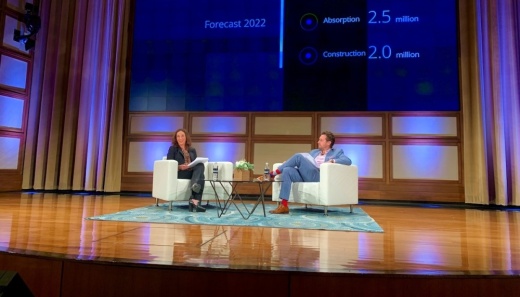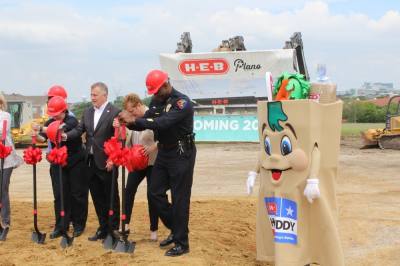The Texas-based commercial real estate firm with offices in DFW, Austin, Houston and San Antonio reported that last year had the third-strongest leasing activity in DFW in 32 years. The firm's annual forecast was streamed live online Jan. 12 from the George W. Bush Presidential Center in Dallas.
According to the company’s presentation, DFW’s retail occupancy last year was 93.5%, just 0.2% less than in 2019.
“Demand for retail space in 2021 not only boosted occupancy, it almost completely reversed the huge increase in vacant space [created] by the pandemic in 2020,” according to Matthew Rosenfeld, an executive vice president with Weitzman.
The data is based on more than 1,400 shopping centers totaling more than 200 million square feet across the metroplex. Weitzman’s forecast for 2022 calls for retail occupancy to increase to 95%.
“Our retailers are stronger, our market is stronger, and our economy is stronger,” said Michelle Caplan, an executive vice president at Weitzman.
Construction of retail space was at an all-time low in 2021, with only 640,000 square feet of new space added, according to the report. This is the first time in the three decades of analysis by Weitzman that new construction was below 1 million square feet.
Rosenfeld said this is part of a decades-long trend of less new construction combined with the higher cost of construction due to the pandemic. He went on to say that despite this, Weitzman forecasts construction to increase substantially in 2022 to more than 2 million square feet as occupancy climbs and demand stays healthy.
The expansion of H-E-B grocery stores into the DFW area, along with that of other large anchors, will contribute to that construction growth, Rosenfeld said. H-E-B stores under construction in Frisco and Plano are set to open in fall 2022.
At the beginning of the pandemic, the retail sector saw weaker chains close. Those that remained focused on restructuring and innovating, Caplan said. And while the pandemic continues to come in waves, retail stores and restaurants have adapted to meet customer needs both online and in stores, she said.
“We call this approach tech and mortar – the way technology enables physical retail to meet customer needs using digital tools,” Caplan said.
Several restaurants, such as Piada Italian Street Food and Velvet Taco, are modifying their retail spaces to have digital drive-through windows that allow customers to place orders online and pick them up with minimal contact, Caplan said.
Grocery stores are also moving toward more online ordering, with Walmart locations in Plano and Lewisville serving exclusively as fulfillment centers, Rosenfeld said.
The online event also included an interview with Noam Ben-Zvi, the co-founder and CEO of Placer.ai, a location data analytics firm. He spoke about the importance of giving retailers the data they need to help make decisions using tracking data from mobile devices and other information. Providing that data quickly can help businesses reach opportunities that they might otherwise not have, Ben-Zvi said.
During the pandemic, for example, online shopping has taken on a new significance. But Ben-Zvi said the data makes clear that “the shopping center is here to stay.”
“When things get really bad, people kind of stayed home, but the moment things ease up and look more optimistic,” he said, “people want to get out of the home as soon as humanly possible and go do things, and they want to do it in the physical world.”
A video of Weitzman’s annual presentation is available online here.






